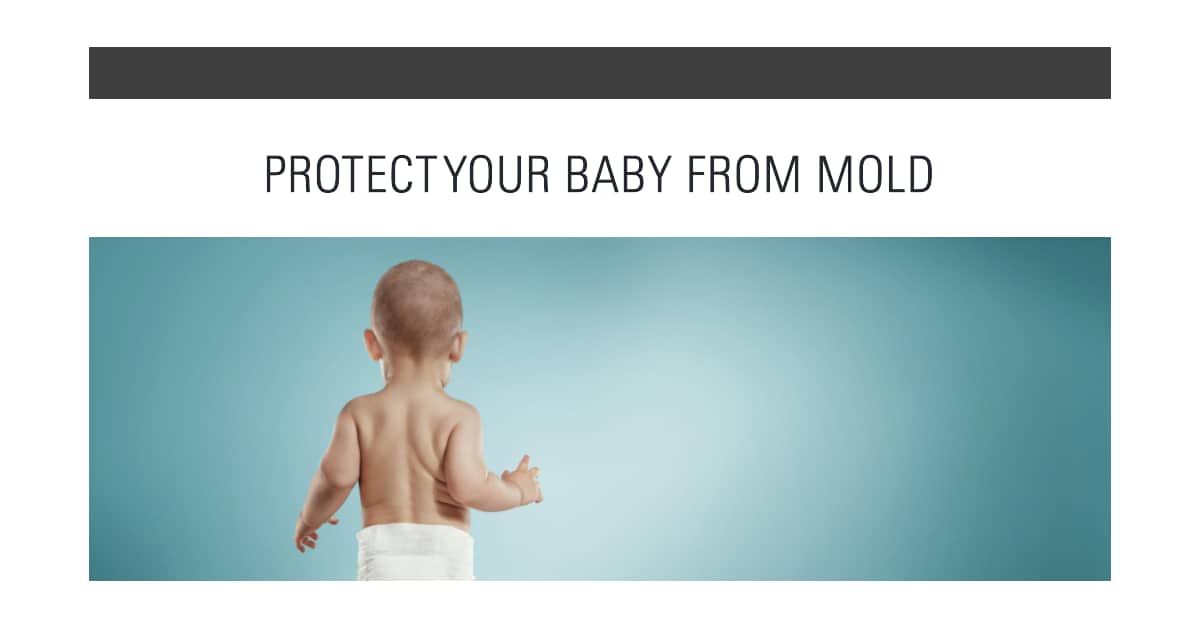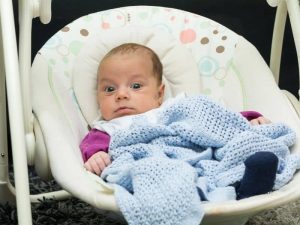How to Treat Mold Exposure in Babies? To treat mold exposure in babies, the primary steps are to identify and remove the source of mould. This means inspecting any areas where moisture is present or where there has been recent water damage. All sources of mold should be removed from the home as soon as possible, such as carpets, furniture, and other porous materials may contain spores.
Additionally, it is important to keep your baby away from all potential sources of airborne spores by using an air filter and ensuring adequate ventilation in the home. It is also a good idea to check for signs of mold on their skin or clothing after they have spent time outdoors or in damp environments. If symptoms like coughing, wheezing, eye irritation or rash occur due to exposure to mold then medical treatment should be sought out immediately.
- Step 1: Remove the Source of Mold – To begin treating mold exposure in babies, it is essential to remove any sources of mold from their environment
- This includes inspecting and cleaning any areas that have visible mold growth, as well as reducing moisture levels in the home by using a dehumidifier or air conditioning unit
- Step 2: Monitor Symptoms – After removing the source of mold, it is important to monitor your baby for any signs and symptoms associated with mold exposure such as coughing, wheezing or difficulty breathing
- If these symptoms are present you should contact your doctor immediately for advice on how to proceed
- Step 3: Cleanse Baby’s Skin – It is also important to cleanse your baby’s skin if they come into contact with any visible traces of mold
- You can use mild soap and warm water to gently wash away surface debris before applying moisturizer afterwards
- Step 4: Administer Medication – Depending on how severe your baby’s symptoms are due to mould exposure, you may need to administer medication prescribed by a doctor
- This could include antihistamines or steroids which can help reduce inflammation caused by allergic reactions caused by inhaling mould spores
- Step 5: Follow Up Appointments – Once treatment has been administered it is advisable that you follow up with regular appointments at the doctors office so that their progress can be monitored over time
Symptoms of Mold Sickness in Babies
Mold can be a serious health hazard for babies, and it is important to recognize the symptoms of mold sickness in order to protect them. Symptoms of mold sickness in babies vary, but can include coughing, wheezing, increased mucus production from the nose or throat, skin irritations and rashes, eye redness and watering eyes. In more severe cases, babies may experience difficulty breathing due to asthma-like symptoms caused by exposure to airborne spores or irritation of their airways.
If you think your baby may have been exposed to mold or are experiencing any of these symptoms, seek medical attention immediately.

Credit: www.npr.org
What to Do If Baby Has Been Exposed to Mold?
If your baby has been exposed to mold, it is important to take appropriate precautions. First, you should inspect the area for visible signs of mold growth and try to remove any existing colonies as soon as possible. Be sure to wear protective gear such as a face mask and gloves when doing so in order to avoid breathing in or touching any potentially hazardous particles.
Next, ensure that the area is adequately ventilated and dry – if necessary, consider installing an air filtration system that can help reduce airborne spores. Additionally, you may want to consult with a doctor or allergist who can provide medical advice on how best to manage your baby’s exposure. Finally, make sure that all household items are regularly cleaned and kept free from dust and moisture buildup – this will help prevent future mold outbreaks.
With these steps taken into consideration, you can be confident that your baby’s health is being looked after properly!
Can a Pediatrician Test for Mold Exposure?
Yes, a paediatrician can test for mold exposure. With more and more homes being built with poor ventilation and insulation, the risk of mold exposure is increasing in children. Paediatricians are trained to recognize the symptoms of possible mold exposure, such as chronic coughing or sneezing, runny nose, skin rashes/irritation, headaches, fatigue and difficulty breathing.
If your child exhibits any of these symptoms and you suspect they may have been exposed to mold then it’s important that you seek medical help right away. A paediatrician will be able to order lab tests that can detect the presence of certain molds in the body as well as take a physical examination which could determine if an allergic reaction has occurred due to contact with toxic molds. Additionally, it’s important to identify where the potential source of this exposure might be coming from so that proper steps can be taken to prevent further contamination.
What Happens If a Baby is Exposed to Black Mold?
Exposure to black mold can be extremely dangerous for babies and young children. Inhalation of mycotoxins, the toxic byproducts released from certain molds, can cause respiratory distress, skin irritation, headaches, sinus infections and other illnesses. Even if a baby isn’t directly exposed or inhaling the spores from black mold in their environment, they may still suffer symptoms due to the presence of mycotoxins in their food or water supply.
Mycotoxin exposure has been linked to developmental delays, learning disabilities and behavior problems in infants and toddlers. Furthermore, long-term health implications related to chronic exposure include memory loss, fatigue and immune system issues. Therefore it is important that any home with a known mold problem take steps immediately to mitigate its spread; this includes ventilating rooms where possible as well as using air filtration systems or high-efficiency particle air (HEPA) filters on heating/cooling units throughout the dwelling.
Additionally, parents should be vigilant about monitoring their child’s health for any signs of illness associated with black mold exposure such as coughing or sneezing fits that don’t improve over time. If you believe your infant may have been exposed to black mold – either through direct contact or via contaminated food/water – seek medical attention right away!
How Do I Know If My Baby Has Mold Poisoning?
Mold poisoning in babies is a serious issue that can have dangerous consequences if left untreated. It’s important to be aware of the signs and symptoms of mold poisoning so you can take steps to prevent it from happening or seek treatment quickly if your baby does become ill from exposure to toxic mold spores. Symptoms of mold poisoning in babies can often mimic other illnesses such as colds and flu, but there are some tell-tale signs that could indicate your little one has been poisoned by mold.
These include coughing, sneezing, wheezing, difficulty breathing, nasal congestion and irritation in the throat or eyes due to inhaling toxic spores. Other potential issues may include skin rashes on exposed areas of skin (such as their face), persistent fatigue and exhaustion or changes in appetite or sleeping patterns. If you think your baby has been exposed to toxic molds spores then it’s essential you get medical help right away – contact your paediatrician immediately for advice on what actions should be taken next.
Toxic mold devastates family, causes myriad health problems
Conclusion
In conclusion, mold exposure can be a very serious health risk for babies. It is important to take steps to prevent mold growth in your home and promptly respond if you suspect that your baby has been exposed. Keeping the humidity level low, regularly checking for signs of mold growth, and cleaning up any visible areas of mold are all important parts of preventing potential health risks associated with mold exposure.
If you do believe that your baby is experiencing symptoms related to mold exposure, it is also important to seek medical attention as soon as possible. Taking these steps can help keep your baby safe from the potentially harmful effects of Mold Exposure in Babies.




